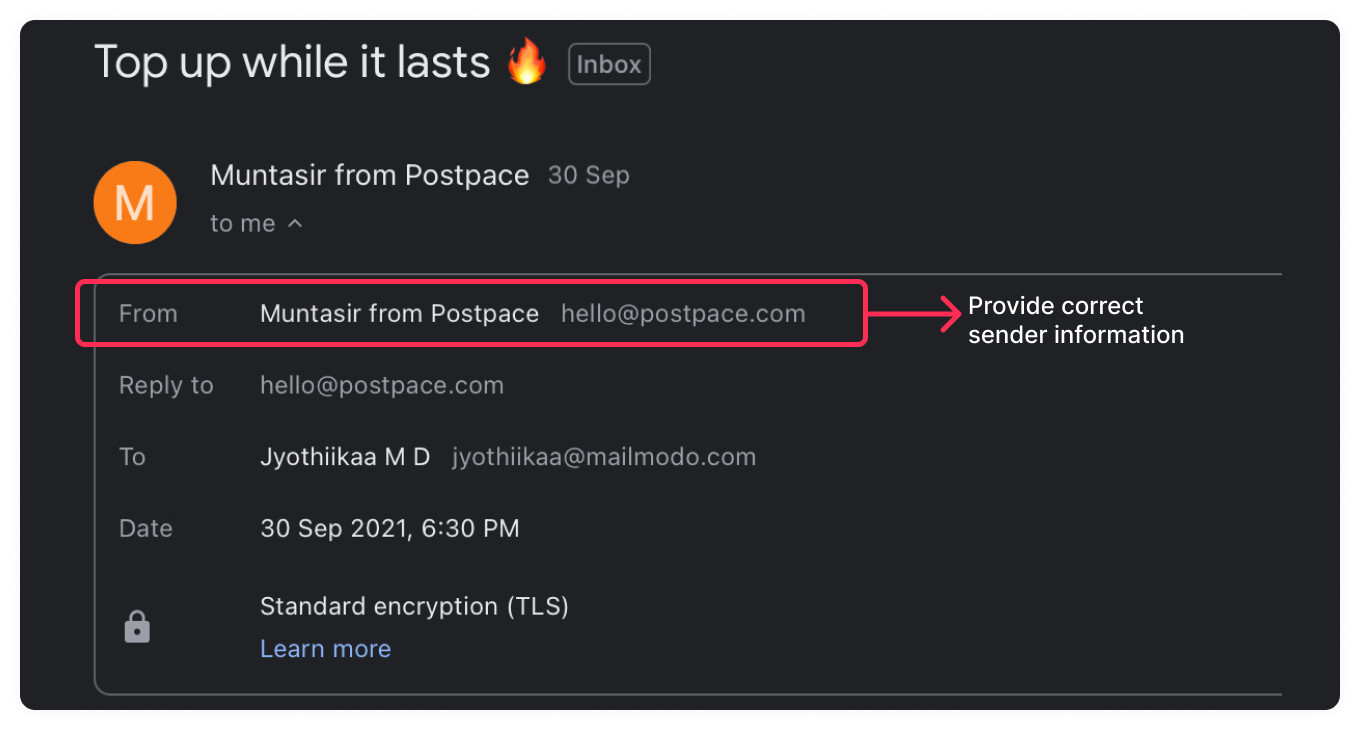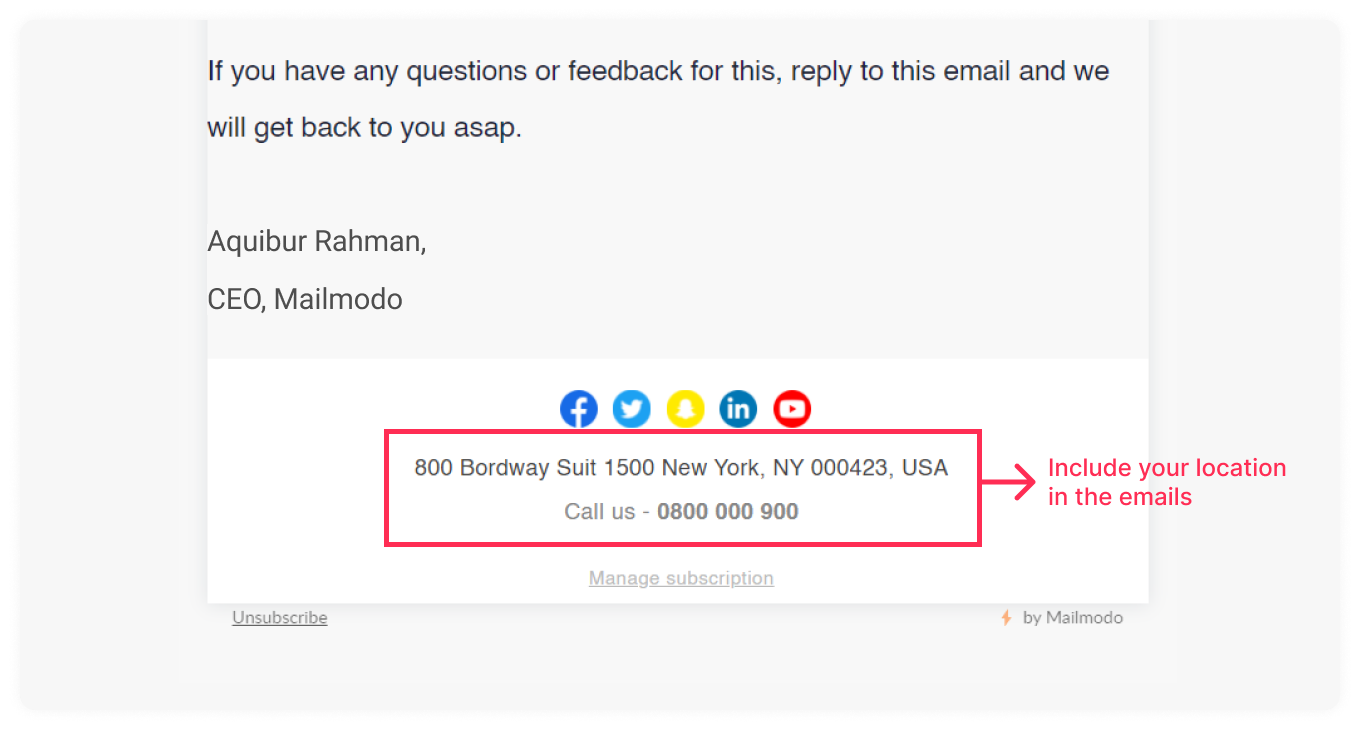The CAN-SPAM act of 2003 is the United States' first national standard for sending commercial messages. The term originates from the phrase "Canning" spam, which means to end spam.
Its primary purpose is to regulate commercial emails, which would reduce spam emails. It has been in action for nearly 18 years now, but still, several people are unaware of it and send emails that violate the law.
So, we have put together a guide explaining CAN-SPAM and its rules for marketers who don't know about it.
Table of contents
- What is CAN-SPAM?
- History of CAN-SPAM
- What are the stipulations of CAN-SPAM?
- Who is CAN-SPAM for?
- How to be CAN-SPAM compliant?
- What happens when you are not CAN-SPAM compliant?
- Wrapping up
What is CAN-SPAM?
CAN-SPAM is short for Controlling the Assault of Non-Solicited Pornography and Marketing. It is an act created by the United States in 2003 to establish a national standard for sending commercial emails and regulating spam emails.
The term originates from the phrase "Canning'' spam. Canning means to dismiss someone from employment, and in this context, it means to expel spam from our emails.
History of CAN-SPAM
The previously existing state laws used bulk (a number threshold), content (commercial), or unsolicited to define spam but failed to describe spam accurately.
This led Congress to come up with the CAN-SPAM Act to cover more types of spam emails. It was a direct response to the rising amount of complaints about the spam emails received by people.
President George W. Bush passed this CAN-SPAM Act, approved by the House and Senate as a law in December 2003. However, despite the senators insisting on FTC to enforce the law, it was not widely implemented.
By December 2005, FTC reported a decrease in the volume of spam reaching people's inboxes due to the implementation of CAN-SPAM and improved anti-spam tech.
In October 2013, according to a report to Congress, there was a substantial decrease in the number of sexually explicit emails reported as warning labels required by CAN-SPAM are being implemented.
What are the stipulations of CAN-SPAM?
Here are the requirements of the CAN-SPAM Act for sending a commercial email:
The information in the email header must specify the identity of the person or business sending the email.
The subject line should be accurate and describe the content of the email.
The email must contain the sender's address.
You must provide an opt-out feature in your emails.
The email must be clearly identified as an ad.
The organization has to take responsibility for the emails sent by them or on their behalf.
Opt-out requests must be honored within a short period.
Check out this handbook for more detail
Who is CAN-SPAM for?
CAN-SPAM pertains to any commercial message sent with the primary purpose of commercial advertisement or promoting commercial products and services.
The CAN-SPAM act applies to any business using email and not just bulk emails. So, for example, even if a sales rep sends a one-off email to a past customer about a new update is subject to the law.
However, transactional/relationship emails are exempted from the CAN-SPAM act as their purpose is not to advertise or promote in the emails. Transactional/relationship emails are the emails sent to enable or ensure a deal the recipient has made with the sender.
How to be CAN-SPAM compliant?
CAN-SPAM compliance is effortless and straightforward. Marketers just have to obey the following rules in every email they send to be CAN-SPAM compliant:
Content compliance
- Provide correct sender information
From, to, and routing data must identify the person or business who sent the email. Include the domain name and email id the email originates from accurately. Don't send emails with false header information.

- Don't write misleading subject lines
The subject line of the email must suggest the content of the email. Avoid using misleading terms in the subject line that would make it clickbaity. If the subject line contains false information about what is in the email, it will lead to compliance issues with CAN-SPAM.
For example, subject lines like "EARN $$$ by clicking on this email".
Also, if the email contains sexually-oriented information, you need to label it as "SEXUALLY-EXPLICIT:" in the first part of the subject line.
- Identify the email as an advertisement
Before CAN-SPAM, some state laws required commercial emails to label" ADV" in the subject line. But now, you don't have to identify it as an ad in the subject line itself.
The law gives you a ton of leeway in doing this, and it only insists that you must identify that your email is an advertisement.
Unsubscribe compliance
- Tell the subscribers how they can opt-out of your emails
Every email you send must have a prominent and visible unsubscribe option in it. And, you shouldn't send emails without the unsubscribe option as it is more likely to be reported as spam by the readers.
- Honor subscriber's opt-out requests promptly
Any opt-out option you offer must accept opt-out requests for at least 30 days after you send your email.
For example, if a reader gets a promotional email from a brand and no longer wants to receive emails from them, they should be able to unsubscribe even if it has been a few weeks since receiving the email.
Sender behavior compliance
- Include your location in the emails
Your message must include your valid physical or postal address. It can be your street address, P.O. Box address, or even a private mailbox.

- Monitor the actions of your email marketing team
The law states that even if you hire a company to deal with your email marketing, you can't ignore your legal responsibility to comply with the law. So, check-in with them periodically and make sure that there are no potential legal issues.
What happens when you are not CAN-SPAM compliant?
If you are not creating CAN-SPAM compliant commercial emails, then here are the legal consequences of it:
The Federal Trade Commission can pursue civil penalties of up to nearly $16,000 for every email that infringes the CAN-SPAM act.
State officials and attorneys can seek injunctive relief, statutory damages for violation of CAN-SPAM that impacts the state’s residents.
Internet service providers can pursue claims for certain violations of the CAN-SPAM act like false header information, lack of warning for emails with sexually explicit content.
The Department of Justice can impose fines and even up to 5 years of imprisonment for intentionally violating the requirement of warning labels in CAN-SPAM for sexually explicit content.
Wrapping up
The last thing you want is to be concerned about potential fines from anti-spam and data-protection regulations like the CAN-SPAM Act, GDPR, and CASL. And it will be the case if you don't follow the compliance conditions.
Compliance guarantees that your marketers and salespeople can focus on content production and marketing, resulting in better response and engagement rates.
As a result, you may improve your chances of completing a sale by focusing on the value produced by reliable connections with your recipients.

